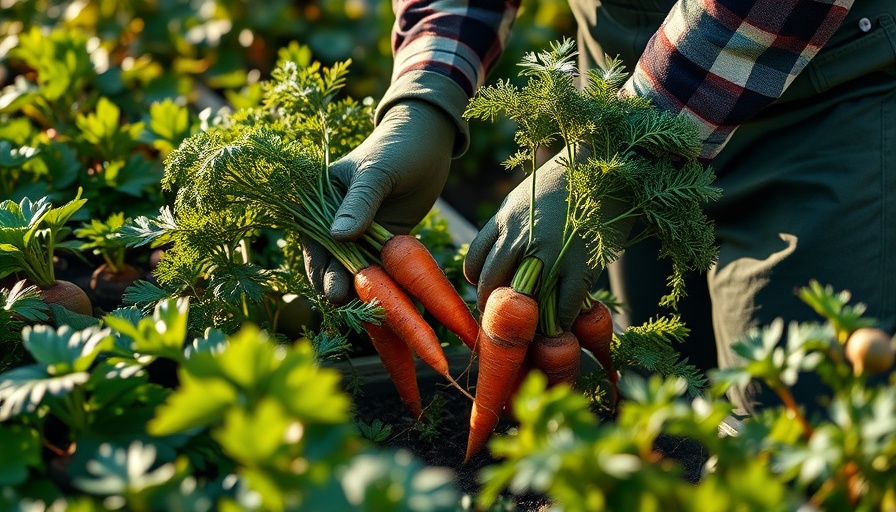
Unlocking the Secrets of Edible Plants That Thrive in Shade
For many homeowners keen on starting their own gardens, the thought of shaded areas often translates to missed opportunities. However, as we delve into the fascinating world of shade gardening, we discover that growing food in the shade is not only possible but can also be exceptionally rewarding! With the right plant selections, you can cultivate a vibrant kitchen garden even in those tricky shaded corners of your yard.
Why Shade Gardening is Worth the Effort
Growing edible plants in shaded areas can seem daunting, especially for those accustomed to the conventional rule that many crops need full sunlight to flourish. Yet, ample varieties can thrive under canopies and indirect light conditions. Leafy greens such as spinach and arugula are prime examples; these greens often produce more tender and flavorful leaves when shaded during hot afternoons, as they avoid the stress of heat and drought.
Top Edible Plants for Shady Spaces
Here are some top choices that homeowners in Muskegon can consider for their shade gardens:
- Matador Spinach: Spinach loves cooler weather, and its flavor can benefit from afternoon shade, which helps keep its leaves tender.
- Astro Arugula: Known for its peppery taste, this leafy green can easily adapt to partial shade, making it a great addition to salads.
- Rosette Tatsoi Bok Choy: This versatile green is not only a treat for the palate but also thrives in shaded conditions.
When considering your backyard planting project in Muskegon, think about creating shaded areas to benefit these delicate plants. They can be the perfect addition to your custom patio ensemble or a vibrant contrast to your existing landscape design.
The Science Behind Shade and Plant Growth
Understanding the type of light your plants need can make a significant difference in your gardening success. While full sun is ideal for fruit-bearing plants like tomatoes and peppers, many leafy greens prefer cooler conditions. Studies indicate that plants such as spinach can withstand and even flourish with just three hours of sunlight, provided they receive ample moisture. This knowledge can empower Muskegon residents to approach garden design more holistically, integrating shaded areas seamlessly into their yards.
Future Trends in Urban Gardening
As urban landscapes continue to evolve, homeowners are becoming increasingly aware of the importance of utilizing space creatively. Shady areas are often ignored, yet they can serve as unique microclimates. By incorporating edible plants, not only are you enhancing biodiversity in your garden, but you're also increasing your vegetable yield without needing expansive garden beds in full sunlight.
Practical Tips for Creating a Shade Garden
Transforming your shaded areas into productive gardens doesn't have to be a challenge. Here are a few tips:
- Evaluate Sun Exposure: Spend a few days monitoring which parts of your yard receive varying amounts of light to determine the best spots for your shade-loving plants.
- Enhance Soil Quality: Building elevated planter boxes or constructing outdoor soil beds Muskegon-style can provide better drainage and nutrient-rich soil for your plants.
- Utilize Vertical Space: Create arched plant supports or use hanging systems to maximize growth potential in limited space.
- Timing is Key: Start planting your greens early in the spring to ensure they'll be ready before the heavy shade sets in.
Embracing a Sustainable Lifestyle
By choosing to grow your own food, particularly in the under-utilized shaded areas, you are not only getting fresh produce at your fingertips but also contributing positively to the environment. The practice of gardening fosters sustainability through increased biodiversity and reduced reliance on store-bought vegetables, which often come with carbon footprints. Engage in local gardening communities—they can provide valuable insights, and who knows, maybe you’ll exchange seeds with a neighbor from Muskegon!
In conclusion, shaded areas in your yard are not just empty spaces; they hold the potential for vibrant edible gardens! If you're considering upcoming projects, now is the perfect time to lay out planting rows and start reimagining your backyard.
Take the first step towards transforming your outdoor space into a lush, productive environment by reaching out to your local experts. For high-quality lawn care, winter plowing, and property management, feel free to call Norther-LawnCare.com or reach Everett Lucas at 231-450-3414. Your perfect backyard garden is only a call away!
 Add Row
Add Row 
 Add
Add 


Write A Comment